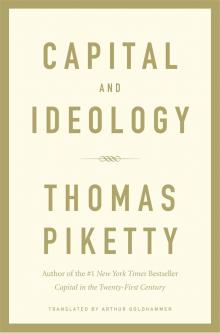

I can remember reading that book, on my phone, waiting in a passport queue on a family holiday.

The detail was similarly ample in C21, but there was a narrative energy that propelled the reader. This points to a strength and weakness of Capital and Ideology.

There are many very good books inside this single volume. Passages that compare, for example, the scale of the clergy class in Poland, Spain and India between the 16th and 18th centuries are truly awesome in their learning. This book differs from his earlier work through a more global perspective. Between 18, 85-90 per cent of European wealth was held by the wealthiest 10 per cent, with only 1-2 per cent of wealth held by the poorest sections of Europe. Some of this will be familiar to readers of the prequel. The book begins with a history of inequality regimes. His conclusion is clear: “what made economic development and human progress possible was the struggle for equality and education and not the sanctification of property, stability, or inequality”.Īs a frequent proponent of the value of political and economic stability, there is ample cause for me to reflect on this claim. C21 (yes, the fame of the book required an abbreviation for the title) has provided a new intellectual scaffolding to understanding the economic causes of inequality and its consequences.Ĭapital and Ideology looks at why inequality is justified, at how “inequality regimes” are created and sustained.


 0 kommentar(er)
0 kommentar(er)
